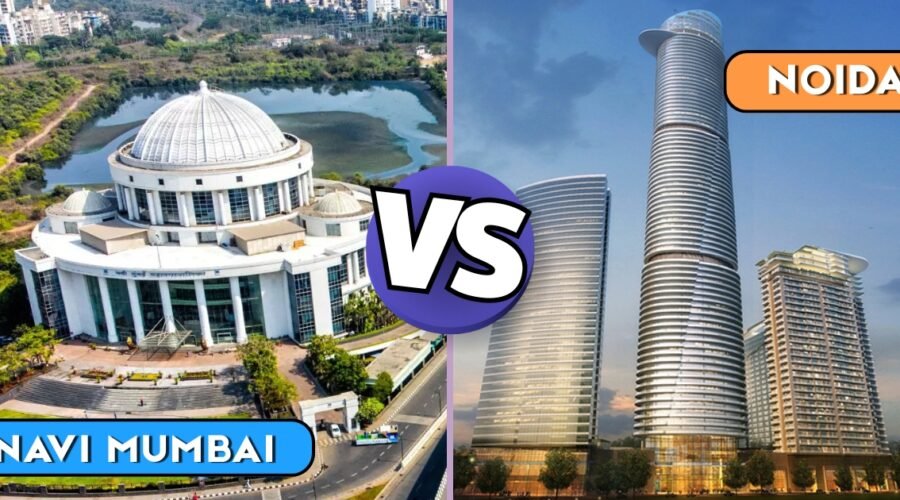Navi Mumbai vs Noida – Best Case Study for Indians
“A heartfelt, grounded case study by someone who’s seen both sides.”
Introduction
Navi Mumbai and Noida, these two cities are becoming the epicenter of India’s growth after Mumbai, Delhi, Bangalore, and many more such cities.
But these both cities are leading their ways in different fields, but they are at the beginning of their real growth potential, and a comparison between them is a must.
That’s exactly what this blog is about — two cities that weren’t born out of centuries of history but were crafted. Navi Mumbai and Noida were built from the ground up with a blueprint in one hand and ambition in the other.
Both were born to serve a need: to take pressure off megacities (Mumbai and Delhi), to offer planned infrastructure, and to become hubs of future urban India. But the question that often pops up — especially if you’re looking to move, invest, or simply dream — is: Which one’s better?
Let’s dive in Navi Mumbai vs Noida, with pure facts and statistics, with my expert commentary. This isn’t going to be a dry stats dump. It’ll feel more like a chai-time conversation — with facts, feelings, and a little bit of frustration thrown in.
History & Foundation
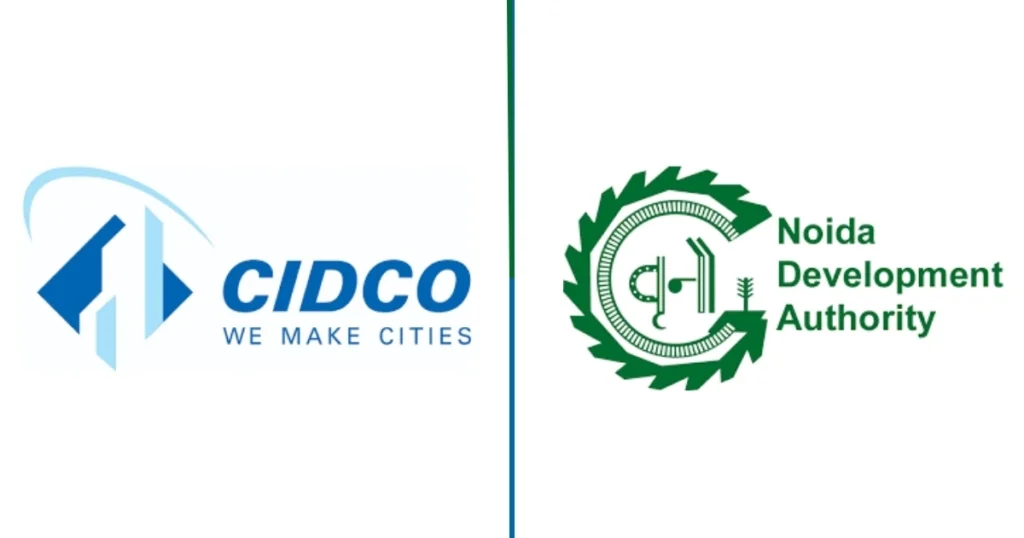
Navi Mumbai- A Slower, But Steadier Vision
When CIDCO first came up with the concept of Navi Mumbai in 1971, it was not merely a city expansion project, but a revolt against the urban madness of Mumbai. Suppose a man were to say, Let us make a twin city, all planned, with sectors, gardens, broad streets, and good drainage. Ambitious? Yes. Unrealistic? Not entirely.
CIDCO had taken land of 86 villages and the development began node by node Vashi, Nerul, Belapur, Airoli etc. It did not happen overnight. Indeed, Navi Mumbai was long regarded as a place to work after retirement, too quiet, too far, too boring.
However, with time, when the madness of Mumbai erupted, people began to realize the order and tranquility that Navi Mumbai provided. And that is when it started to blossom in silence.
Noida – Designed to be an industrial hub, transformed into a city of grit
Noida, on the other hand, which was officially established in 1976, was more industrial in its agenda. It was set up under the UP Industrial Area Development Act, to promote manufacturing and to develop an economic center that would supplement Delhi.
The twist? The liberalization occurred in the 90s, IT replaced it, and Noida transformed into a tech paradise overnight. Industries sprung up quicker than you could change your address. The city did not develop naturally, it ran.
However, that was a sprint at a cost. In contrast to the planned Navi Mumbai, Noida was occasionally hasty. High towers were erected before roads were laid. Malls were opened prior to the completion of the drainage system. But hey, it had energy, employment, and access to Delhi.
City Planning & Infrastructure
Urban Layouts, Sector Systems & the Ground Reality
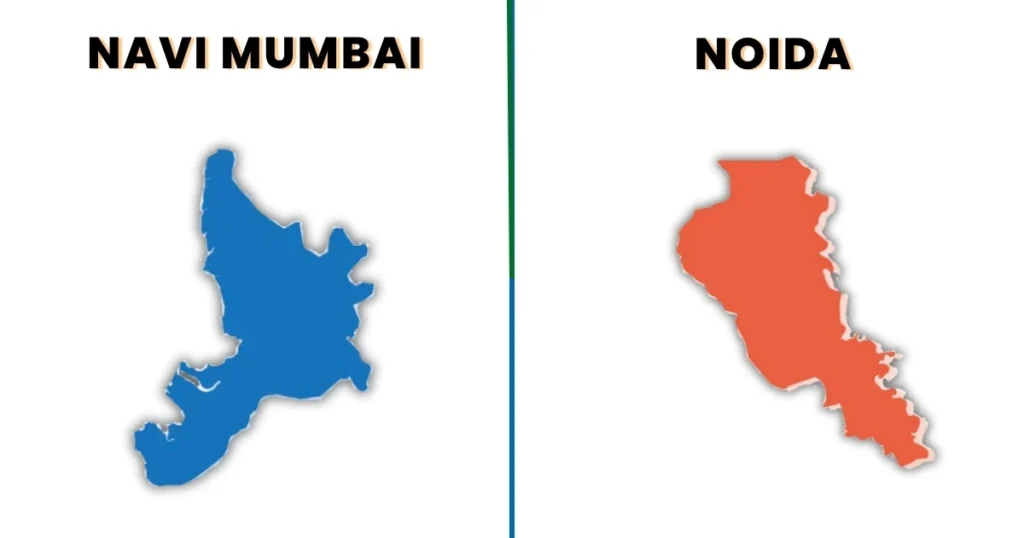
If urban planning were a subject in school, Navi Mumbai would be that nerdy kid with neat handwriting. Everything is sorted from sectors to zones, to designated residential and commercial belts. The nodes like Kharghar, Vashi, and Airoli follow a logic that’s hard to miss. Trees line the roads, footpaths exist (yes, in India!), and there’s a genuine effort to separate chaos from calm.
But, and there’s always a ‘but’. Navi Mumbai still sees illegal encroachments, with over 20% of the population in slums. Ideal plans don’t always survive real-world India.
Noida, on the other hand, is built on a grid. More than 150 sectors were planned, many of which have their own micro-economies. It feels efficient… at first. But when you actually start living there, you notice the missing bits — uneven sector development, lack of cohesive public spaces in some parts, and that undercurrent of builder-politician drama that occasionally messes with infrastructure quality.
Both cities were planned. Only one stuck more closely to the plan.
Connectivity, Commute & Future Mobility Dreams
Navi Mumbai is coming into its own transport-wise. Long wait, but now:
- Metro Line 1 is now operational (Belapur to Pendhar).
- MTHL (Mumbai Trans Harbour Link) was launched in 2024 and transformed the game.
- The Sion-Panvel Expressway links you to Mumbai in a smooth manner.
- The railway junction at Panvel is a lifeline to long distance travelers.
And what do you know? There are more metro lines on the way. The network will reach 106+ km by 2030. Long overdue, but certainly welcome.
Noida, in its turn, is not falling behind. It had metro earlier than Navi Mumbai had – Aqua Line is good, and the extension to Greater Noida was long overdue. Noida has the fast-lane advantage of highways such as the Yamuna Expressway and DND Flyway. It is fast, it is linked.
The downer? It continues to rely on the railway and airport infrastructure of Delhi.
Water, Cleanliness & Sustainability – Who Keeps It Neater?
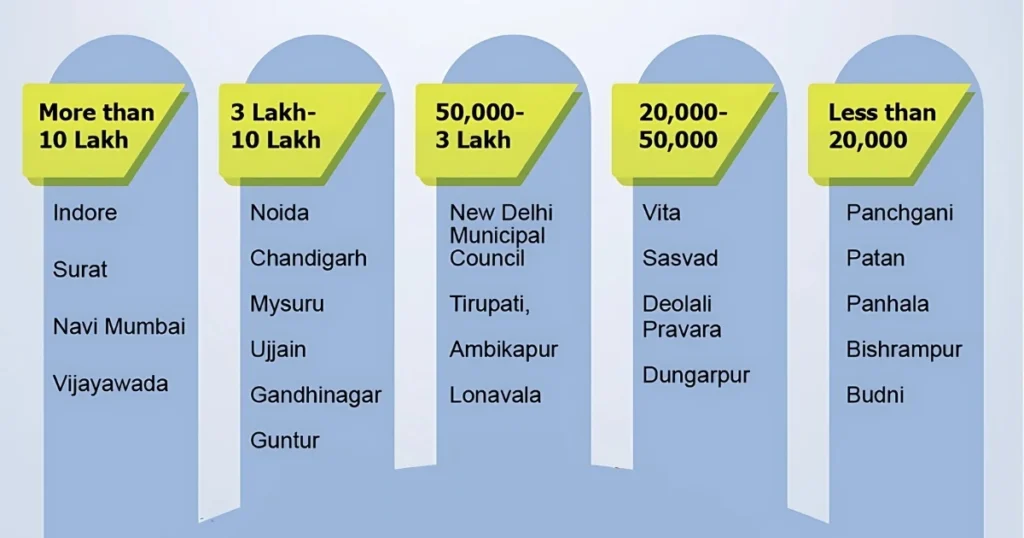
Here’s where Navi Mumbai truly shines.
- Ranked 3rd in Swachh Bharat rankings (2024-25) — that’s not a small feat.
- Waste management is relatively organized: 1,200 tonnes/day handled, with 70% treated.
- Water supply? CIDCO ensures 450 MLD — and guess what? Rarely any shortage complaints.
Noida is actually better. It ranked 1st in the cleanliness index in 3 Lakh to 10 Lakh population category, which is really great. Waste processing is at 70%. But, water shortages still make the news occasionally. Source
Demographics & Lifestyle
Population Growth, Migrant Waves & Culture
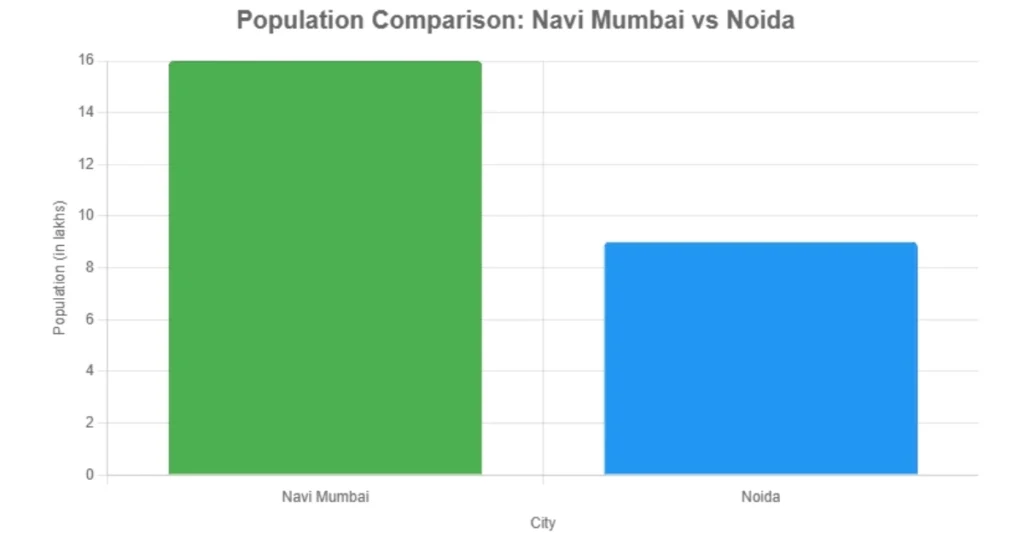
Navi Mumbai is home to about 1.6 million people now. Migrants from across Maharashtra (especially Mumbai) make up 40% of that. It feels culturally consistent — Marathi, peaceful, with hints of cosmopolitanism creeping in thanks to IT parks. Source
Noida has nearly a million residents, but its NCR umbrella gives it a much larger influence. About half the population is made of migrants — mostly from UP, Bihar, and Delhi. It’s faster, louder, and more diverse. Source
I’ve noticed this — in Navi Mumbai, festivals feel like community affairs. In Noida, they feel like events.
Education Standards, Living Standards, Literacy & Skill Ecosystems
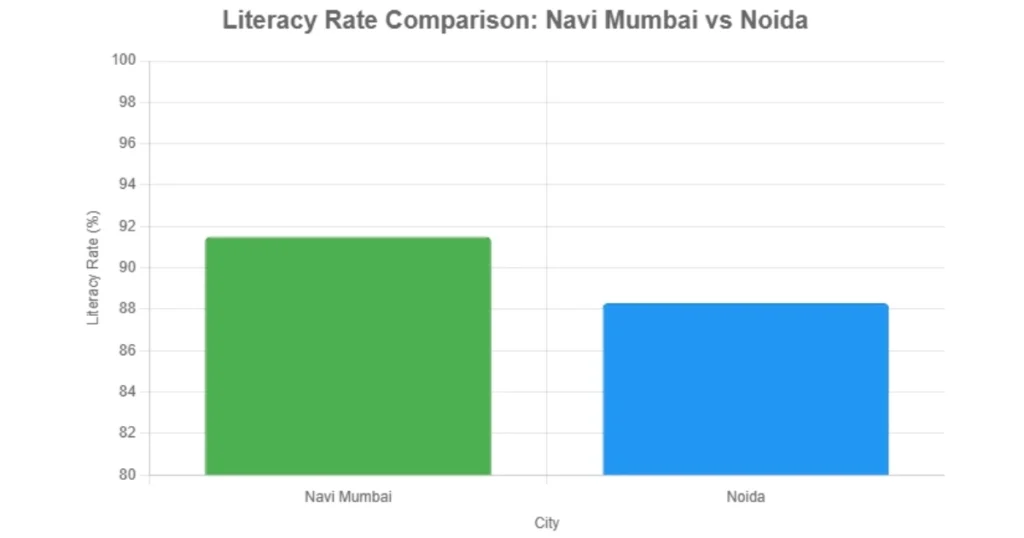
Navi Mumbai has a literacy rate of 91.5%, which is pretty solid. The education infrastructure includes everything from Ryan International Schools to DY Patil University. Plus, vocational training centers run by NMMC in places like Nerul and Airoli are helping youth pick up employable skills. Source
Noida trails slightly at 88.3% literacy — still good. But its educational landscape is bigger — DPS, Amity, Shiv Nadar, and tons of private skill centers, especially in Sector 62. It’s an education hub for NCR. Source
If you’re budgeting for everyday life – rent, utilities, groceries, leisure – A data suggests that maintaining a lifestyle costing ₹151,915/month in Noida would cost nearly ₹160,000 in Navi Mumbai. Source
Where Navi feels more structured, Noida feels more competitive.
Health, Safety & Everyday Environment
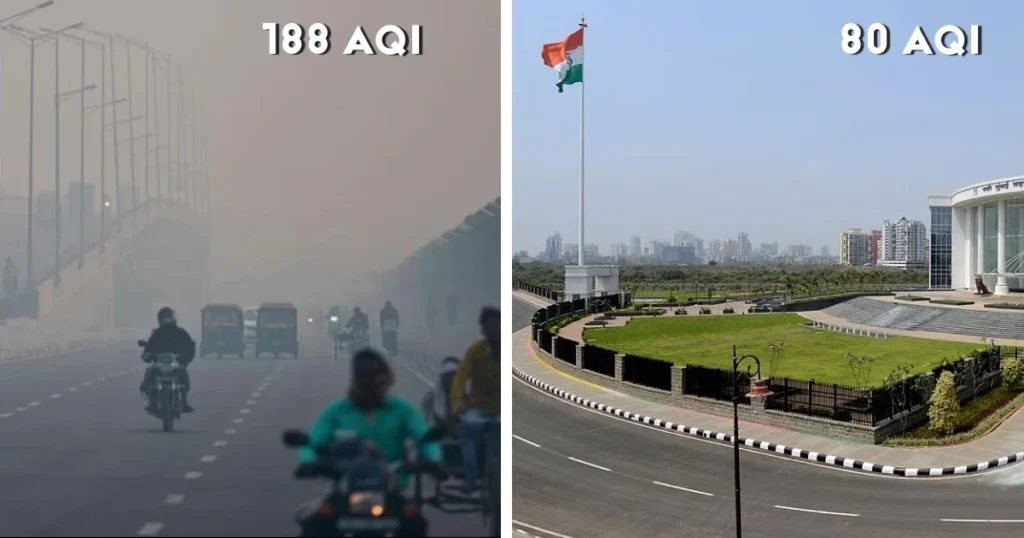
This one’s personal. I’ve walked through Kharghar’s Central Park and felt a sense of calm that’s rare in cities. Navi Mumbai’s pollution levels hover around 40–50 µg/m³ — not ideal, but manageable. Crime rate? Lower than average (1,200 cases/100k).
Noida has its challenges. PM2.5 levels in winters? 90–100 µg/m³. That’s rough. The air smells of construction. Crime rates are higher too — 1,800 cases/100k. But in its defense, it offers world-class hospitals like Fortis and Jaypee.
Economy & Jobs
Economic Drivers & Industrial Strength
Navi Mumbai leans heavily on logistics (thanks to JNPT), IT in Airoli-Mahape, and financial services in Belapur. The SEZs — especially Millennium Business Park — have become startup zones. And with the upcoming airport, the economy is only going to grow.
Noida is already a beast — IT, media, electronics, film. You name it. Sector 62 and 63 are buzzing with MNCs and coders pulling all-nighters.
Navi is becoming. Noida already is.
Startups, Freelancing & Gig Hustle Culture
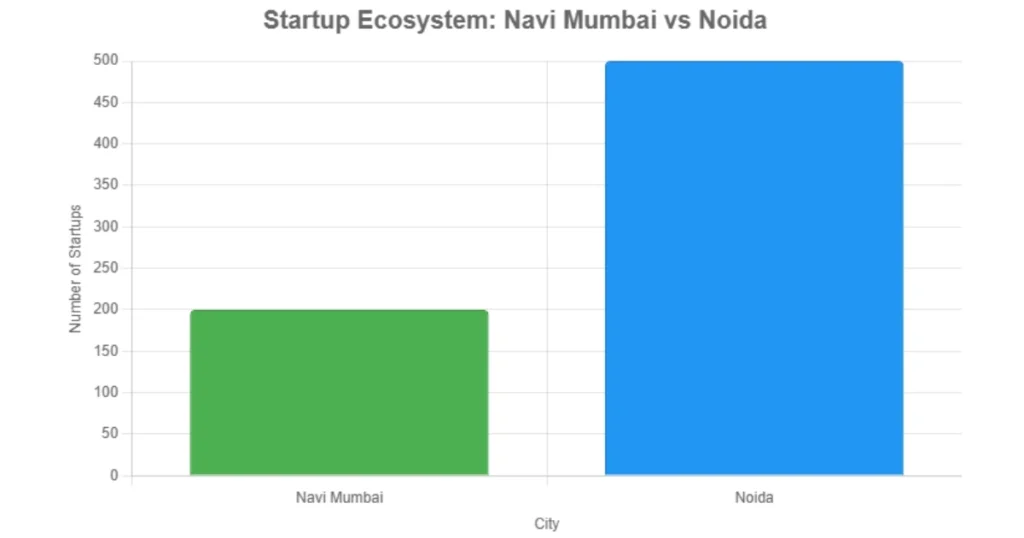
Navi Mumbai hosts over 200 startups — mostly logistics and IT-based. But here’s what stood out: over 10,000 freelancers work from home, coffee shops, and coworking spaces — many attracted by affordable rent.
Noida boasts 500+ startups, especially in tech and e-commerce. Sector 16 and 125 are coworking heaven. The startup ecosystem feels more energetic, but also more stressful.
Real Estate
Price Tags, Affordability & Realistic Investment Goals
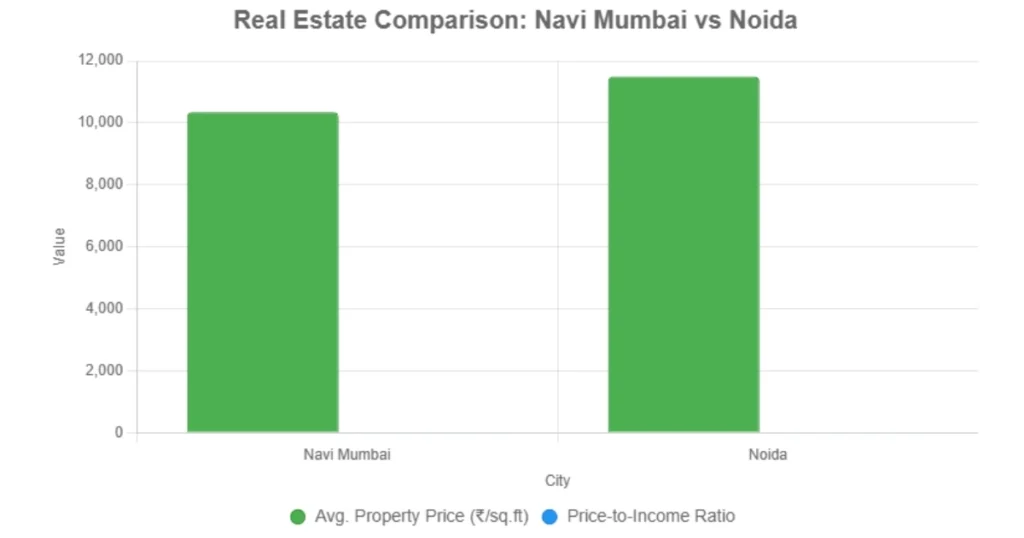
Let’s talk numbers:
- Navi Mumbai: ₹10,349/sq.ft on average. Taloja? ₹5,800–₹9,000. Seawoods? ₹16,800+
- Noida: ₹11,500/sq.ft. Sector 150 is ₹8,500, while Sector 74 hits ₹10,000+
Rental yields in Navi are stable — 3–5% for residential, up to 8% commercial near the airport. Noida offers similar returns, especially in commercial spaces.
But here’s the kicker — Navi’s price-to-income ratio is better (8.5 vs. 9.2). Translation? You can own a home here faster.
If you are willing to invest in Navi Mumbai, read this before making big mistakes.
Growth Prospects & Expert Outlook
Experts say Navi Mumbai’s demand will rise 20% by 2025 (Knight Frank). Areas like Ulwe and Kharghar are expected to explode once NMIA goes live.
Noida saw $2.7 billion in real estate investments in Q2 2024. Sector 74 and 150 are hot zones. But stalled projects and litigation worries still haunt parts of Greater Noida.
Lifestyle & Culture
Entertainment, Food & That Local Vibe
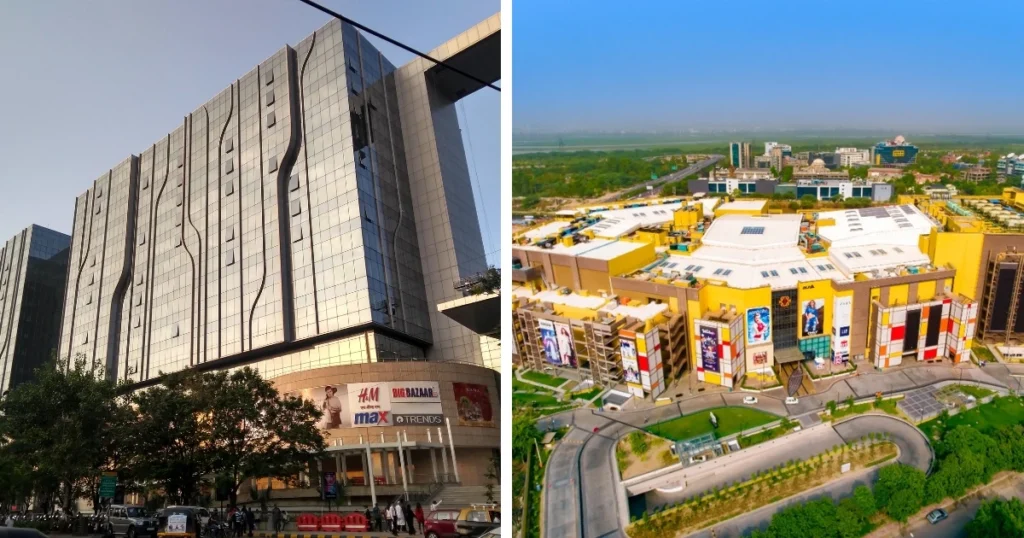
Navi Mumbai is more relaxed. Malls like Seawoods, Inorbit, and multiplexes are popular, but nightlife is limited. The local food is underrated though — especially in Belapur and Palm Beach Road.
Noida is louder, flashier. Sector 18 is buzzing. DLF Mall of India and GIP are weekend hotspots. Cafes, pubs, street food — you’re spoiled for choice.
It comes down to this: If you want peace, Navi’s for you, but if you are more like a late-night party guy, Noida’s for you.
Events, Celebrations & Cultural Soul
Ganesh Chaturthi in Navi Mumbai? Intimate, emotional. There’s a community warmth.
Noida’s Diwali Mela, Flower Show, and Holi events? Grand, colorful, energetic — but more commercial.
Both cities celebrate. Just with different heartbeats.
Challenges Faced by Each City
Infrastructure & Development Delays in Navi Mumbai
Although it has a well-planned background, Navi Mumbai has not always been timely. The biggest example? The Navi Mumbai International Airport (NMIA) is a mega project that has been delayed several times. Its launch was initially scheduled in 2024 but is now anticipated in the September of 2025.
Furthermore, although the vision of CIDCO was to have a slum-free development, currently, more than 18.5 percent of the population (more than 2 lakh people) reside in informal housing, which is usually caused by the lack of consistency in enforcement and in-migration.
The traffic control in major junctions such as Vashi and Nerul is starting to crack during peak hours. The city has performed very well so far, but the rate of population increase is straining the initial master plan.
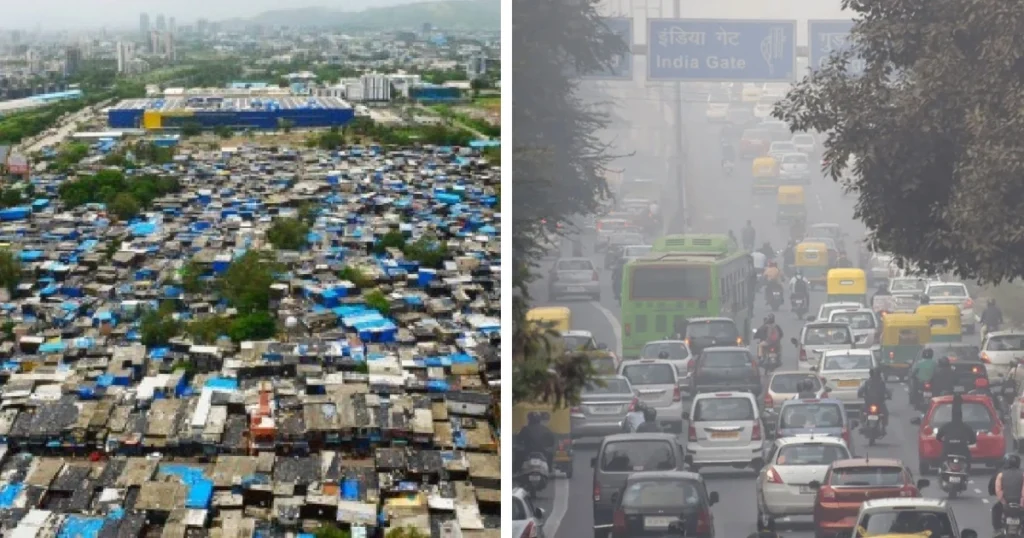
Urban Struggles, Pollution & Legal Battles in Noida
Noida has its own set of critical challenges, and many stem from rapid, often unchecked, real estate growth.
- Air pollution is a major issue — winter AQI consistently touches 200–250, placing it in the “poor” to “very poor” category.
- Law and order remains a concern. The crime rate (1,800 cases per 100,000) is significantly higher than Navi Mumbai, with issues ranging from petty thefts to land disputes.
- Most notably, over 20 real estate projects in Greater Noida are stalled, leaving thousands of homebuyers in legal limbo. These builder-authority conflicts, often involving delayed possession and disputed land titles, have deeply affected public trust.
Governance, Transparency & Bureaucratic Coordination
Navi Mumbai is faced with the problem of dual governance between CIDCO and NMMC. There are cases where responsibilities overlap and this causes delays in execution or blame-shifting of delays.
Noida is under the control of the NOIDA Authority only, and it is accused of not being transparent, particularly in land distribution and builder agreements.
To conclude, Navi Mumbai is plagued by bureaucratic delays and excessive dependence on CIDCO, whereas Noida is struggling with credibility and the effects of breakneck urbanization.
Future Development & Urban Transformation Plans
Mega Infrastructure Projects Poised to Change the Game
Navi Mumbai’s Strategic Upcoming Projects
- Navi Mumbai International Airport (NMIA): Phase 1 with 25 million annual passenger capacity is expected by September 2025.
- MTHL (Mumbai Trans Harbour Link): Already operational (Jan 2024), this 22-km sea bridge has drastically improved connectivity to Mumbai.
- Metro Expansion: 106.4 km planned, covering multiple new corridors by 2030.
- NAINA (Third Mumbai): A 90,000-acre smart township that will expand Navi Mumbai into a self-sufficient urban node.
Noida’s Ambitious Urban Blueprint
- Noida International Airport (NIA) at Jewar: Phase 1 with 12 million passengers/year target by November 2025.
- Film City Project: Spanning 1,000 acres, expected to become India’s largest media hub by 2027.
- RapidX Corridor: 82-km Delhi-Meerut RRTS will pass through Noida, redefining intercity commute.
- Smart City Initiatives: Sectors 50 and 62 are being redeveloped with smart metering, IoT-based surveillance, and e-governance platforms.
Both cities are building for 2030 and beyond — but Navi Mumbai seems more infrastructure-focused, while Noida is aiming at economic diversification (media, startups, etc.).
Smart City Reforms, IoT & Data-Driven Governance
Navi Mumbai’s NAINA project is integrating IoT-based traffic control, rainwater harvesting, and solar-powered amenities. The vision is to create a “third Mumbai” that reduces dependency on the existing city.
Noida’s smart grids, water management systems, and automated citizen services (via apps and e-portals) are more digitized but face implementation bottlenecks.
Who wins? In ambition — both. In consistent execution? Navi Mumbai seems more grounded in practicality.
Navi Mumbai International Airport vs. Noida Airport
This is the make-or-break zone for both cities. Airports don’t just fly people — they fly economies. Let’s break it down.
Location, Size & Stakeholders Behind the Terminals
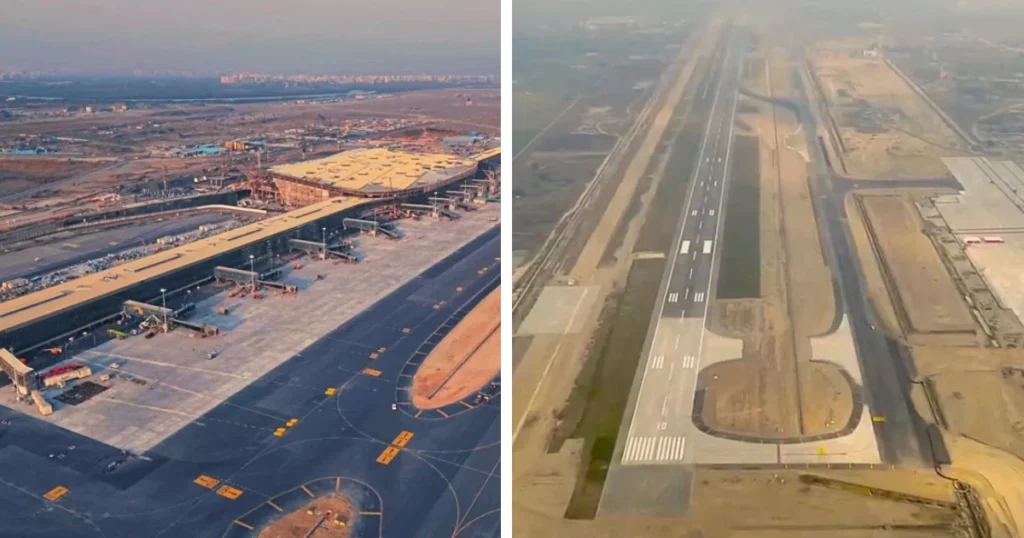
NMIA (Navi Mumbai)
- Location: Ulwe, Navi Mumbai — well connected to Panvel, MTHL, and Mumbai.
- Developer: Adani Group (74%) + CIDCO (26%)
- Phase 1 Capacity: 25 million passengers/year (2025)
- Full Capacity: 90 million passengers/year (by 2033)
- Cargo Handling: 0.5 million tonnes/year in initial phase and will go upto 3.2 million tonnes/year
NIA (Jewar, Noida)
- Location: Jewar, Gautam Buddha Nagar — 40+ km from central Noida.
- Developer: Zurich Airport International (100%)
- Phase 1 Capacity: 12 million passengers/year (2025)
- Full Capacity: 225 million passengers/year (exact date is not announced)
- Cargo Handling: 0.3 million tonnes/year in its inital phase and will go upto 0.8 million tonnes/year
NMIA is larger in scale, closer to key economic centers, and backed by stronger multi-node support (road, metro, sea). NIA is impressive but slightly more isolated geographically.
Infrastructure, Design, & Green Innovations
Both airports are LEED-certified, focused on:
- Solar panels
- Water recycling
- Rainwater harvesting
- Advanced baggage and immigration systems
NMIA integrates directly with:
- Mumbai Metro Phase 4
- MTHL
- Sion-Panvel Expressway
NIA will be connected via:
- Yamuna Expressway
- RapidX
- Planned Metro extension from Noida City Centre
However, Navi Mumbai’s port and sea proximity also makes it a logistics powerhouse, enhancing its role in international cargo distribution — a key USP.
Final Verdict – Which City Is Better for Whom?
Let’s admit: there’s no one-size-fits-all answer. But based on real metrics and purpose, here’s a summarized view:
| Factor | Navi Mumbai | Noida |
|---|---|---|
| Cleanliness Rank (2023) | 3rd | 14th |
| Crime Rate (/100k) | 1,200 | 1,800 |
| Avg. Property Rate | ₹10,349/sq.ft | ₹11,500/sq.ft |
| Rental Yield (Res.) | 3–5% | 2.5–4% |
| Startups & Gig Economy | 200+ startups, 10k freelancers | 500+ startups, 15k freelancers |
| Airport Integration | Seamless (road, rail, sea) | Isolated but evolving |
| Pollution (PM2.5 Winter) | ~45 µg/m³ | ~95 µg/m³ |
Best For:
Professionals (IT/BFSI/Startups):
- Noida for startups & IT
- Navi Mumbai for BFSI, logistics, hybrid roles
Families/Retirees:
- Navi Mumbai for safety, green spaces, healthcare
Investors:
- Navi Mumbai for long-term ROI (Ulwe, Dronagiri)
- Noida for commercial investments (Sector 62/63, 150)
Navi Mumbai and Noida aren’t just satellite cities anymore. They are now epicenters of urban India’s future.
- Navi Mumbai: Patient, disciplined, infrastructurally mature.
- Noida: Fast, opportunistic, economically aggressive.
Both are experimenting with what it means to “build a city” in India — not just physically, but socially and economically.
If you’re looking for stability, Navi Mumbai is your bet. If you’re chasing growth and don’t mind the chaos, Noida has the energy.
This isn’t just a comparison — it’s a reminder that urban India is still writing its story, one metro pillar and airport terminal at a time.
FAQs
Frequently Asked Questions on Navi Mumbai vs Noida

